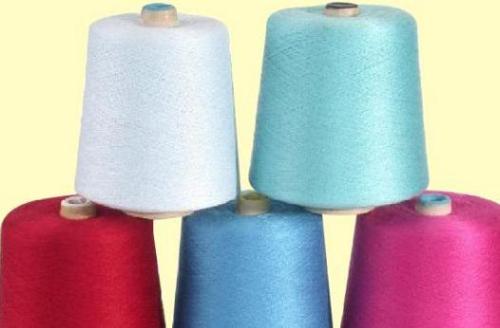
The main reason for the continued drop in the price of imported cotton yarn?
Textile enterprises: mainly due to undecided policies, unstable market information, and downstream companies worried about the devaluation of their yarn inventory after a sudden price reduction in the future, and that orders are very cautious. This results in a backlog of imported yarn inventory. According to feedback, the current port The imported yarn inventory has exceeded 90,000 tons.
Recently, many textile companies have stopped cotton procurement, mainly due to waiting for the implementation of the policy, and wait and see for the time being. Yesterday again, there was news that reserve cotton will be put in a 4:1 situation and the quota will be set at 17250. Once this policy is implemented, how will the international cotton market, spot market, and reserve cotton be put into the market?
In the international cotton market, the allocation of quotas is conducive to the US dollar trading. Recently, due to the news of the related quota quota of 4:1, the international cotton price has been affected a bit and the US dollar has started to rise.
Domestic spot market: The price of cotton will be affected by the price of deposits and deposits, prices will fall, the difference between cotton prices inside and outside the country will decrease, and the quota price will fall. In the long run, there is a high probability that the prices of cotton inside and outside will converge.
Reserve cotton is put on the market: the trading volume will increase, and the increase will depend on the resources. If the resources are abundant, Xinjiang cotton, cotton, and new flowers will be in large numbers, and the increase in transaction volume will be greater, and vice versa. It will be too big.
The recent decline in the prices of chemical fiber raw materials and synthetic fiber yarns is the main reason.
Textile companies: The price collapse is mainly due to the imbalance between supply and demand. At present, the polyester is full, only about 78% of PTA capacity can be used. This year, PTA also increases production by about 28%, which means that PTA is now full and the downstream is full. Polyester supply exceeds demand by nearly 40%. Even if we remove the new polyester production capacity this year, the overall calculation will require an additional 25-30% of production capacity. It can be said that the future market volatility can only be judged by production, because from a productivity point of view, PTA will continue to decline in the short term.
For PTA, the only support now is cost support (ie, PX). According to current prices, a net loss of about 1 ton is about 300, but its price has always followed PX, even if it is in a loss state.
The prices of chemical fiber raw materials and yarns continued to fall, and the difference between cotton and ceramics further expanded. In mid-to-late February, the price difference exceeded 10,000 yuan for the first time. Will the spread widen will accelerate the rate of material transfer of raw materials? If the policy is adjusted, what will happen if the price of cotton returns to a reasonable price?
Textile enterprises: The replacement rate of chemical fiber to cotton depends mainly on the price difference between the two. If the spread is appropriate, the replacement rate of chemical fiber will be very fast. Currently, many clothes have begun to use Quandi. Even if the price of cotton returns after policy adjustment, if the spread continues to widen, the transfer of raw materials will still be the trend of the times. However, in terms of relative comfort, pure cotton is more comfortable, so pure cotton products will still have its own market, but the share will decrease.
In the coming year, Australian Cotton will be listed. What is the intention of the textile companies?
Textile enterprises: At present, port cotton is mostly printed and cotton, and a small amount of US cotton and good Australian cotton resources are all ordered. Australian cotton began to arrive in Hong Kong in April and will increase gradually after May. Some companies stated that they The procurement schedule for cotton is generally around the purchase of printed cotton and cotton before and after the Spring Festival, the purchase of the first wave of Australian Cotton in April and May, and the purchase of the second wave of Australian Cotton in the months of September, October, and the stock of US dollars interspersed with bonded warehouses. In November/December, some West African cotton will be purchased. US cotton and Australian cotton are still the first choice for textile companies. If the price is right, the purchasing power will be great, and the quota will be greater.
Voile Pleat,Voile Pleat Fabric,Voile Crease Fabric,Polyester Voile Crease
SHAOXING SKYRISE TEXTILE CO.,LTD , https://www.eurofashiontextile.com
![<?echo $_SERVER['SERVER_NAME'];?>](/template/twentyseventeen/skin/images/header.jpg)